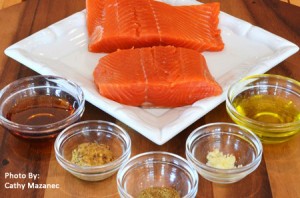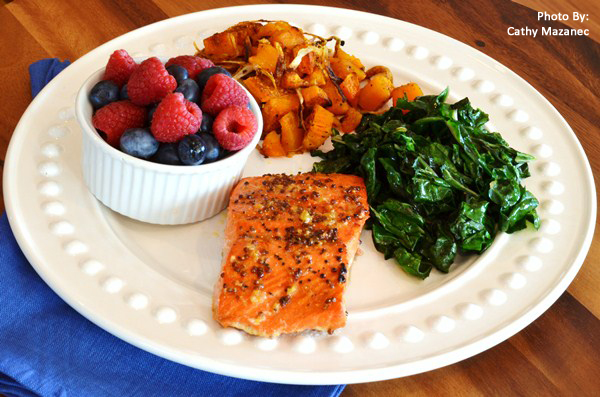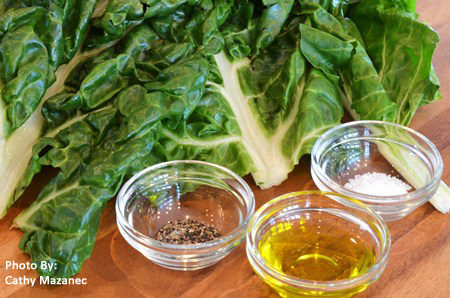No doubt many folks feel an energy slump in the winter months. Short days and long nights plus the added drain of gray or rainy days can dampen our spirits.
Did you know certain nutrients may help calm anxiety or boost your spirits? If you feel a drop in your mood in the winter (or any time of year), focus on these nutrients and the foods in which they’re found to get an extra emotional advantage.
1. FOLATE (FOLIC ACID)
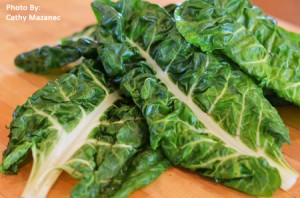 Folate, found in leafy green vegetables, is an important B vitamin that, along with Vitamins B6 and B12, is involved in neurological function including mood management. Folic acid is the synthetic form of folate which is found in nutritional supplements and fortified foods. Genomics researchers have discovered that many people have a gene defect that prevents them from converting the folic acid that has been added to foods and supplements into the usable form of folate that is found in foods. For this reason, it is a good idea to rely on foods naturally high in folate to meet your RDA.
Folate, found in leafy green vegetables, is an important B vitamin that, along with Vitamins B6 and B12, is involved in neurological function including mood management. Folic acid is the synthetic form of folate which is found in nutritional supplements and fortified foods. Genomics researchers have discovered that many people have a gene defect that prevents them from converting the folic acid that has been added to foods and supplements into the usable form of folate that is found in foods. For this reason, it is a good idea to rely on foods naturally high in folate to meet your RDA.
Foods known to be high in folate include:
- Liver
- Leafy greens
- Black-eye peas and other beans and lentils
- Asparagus
- Brussels sprouts
- Broccoli
The RDA for folate is 400 mcg per day for adult men and women (600 mcg for pregnant women, 500 mcg for breastfeeding women).
Aim for 5-6 servings of high folate foods every day to meet the RDA.
Click here for a list of folate-containing foods.
Supplement Facts:
If you do take a folic acid supplement or multivitamin containing folic acid, look for a quality brand like Pure Encapsulations® or Thorne® that contains folate in the form of methyl-tetrahydrofolate (MTHF) instead of folic acid to help insure it is properly absorbed and utilized by your body.
For more information about Folate, click here.
2. OMEGA 3 FATTY ACIDS
Omega 3 fats from oily fish (EPA and DHA) have been shown in several small studies to improve mild to moderate depression. Though plant sources of omega 3s (ALA) can be found in walnuts, flaxseed, canola oil and soybeans, the omega 3s from fish have shown the most benefit for improving depression. An added bonus of omega 3 fats is their heart health benefits and potential anti-inflammatory properties.
Strive for at least two 6-ounce servings weekly of the following fatty fish:
- Wild Alaskan salmon
- Herring
- Sardines
- North Atlantic mackerel or chub - (Not King Mackerel which is high in mercury)
Supplement Facts:
If you’re considering a fish oil supplement, choose a high quality brand like:
- Nordic Naturals®
- Carlson®
- Barleans®
A dose of 650-1000 mg of combined EPA + DHA (check the Nutrition Facts label not the front label for content) is a recommended daily dose. Check with your health care provider to determine if an omega 3 supplement is appropriate for you.
3. L-THEANINE
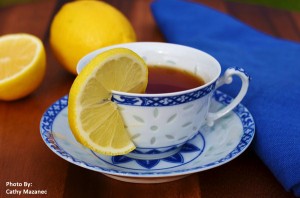 L-Theanine is a water soluble amino acid found in tea that has been shown to improve cognition (alertness and attention) and relax the mind without causing drowsiness.
L-Theanine is a water soluble amino acid found in tea that has been shown to improve cognition (alertness and attention) and relax the mind without causing drowsiness.
This calming effect is even proposed to override the stimulant effect of the caffeine in tea which is why some nutritionists and researchers recommend tea instead of coffee. As an added bonus, L-Theanine is a powerful antioxidant.
Food Sources of L-Theanine include:
- Green Tea
- Black Tea
- Bay bolete mushrooms
Leading nutrition researchers recommend drinking 4 cups of green or black tea daily to enhance mental alertness and calm anxiety (and for heart health and cancer prevention). If the caffeine is a problem for you, choose a naturally decaffeinated variety.
Sources:
-Institute for Functional Medicine, Clinical Nutrition, 2004
-Hyman, Mark, The UltraMind Solution, 2008.
-Weil, Andrew, Dr. Weil’s Anti-Inflammatory Food Pyramid, 2014
-National Institutes of Health, Office of Dietary Supplements, 2012
-Consumerlab.com, 2014
Maple-Glazed Salmon
Makes 4 Servings
Recipe adapted from Health.com
Ingredients
1 pound skinless salmon fillets
1 TBSP extra virgin olive oil
1 ½ TBSP maple syrup
2 tsp. grainy mustard
1 clove garlic, minced
Pinch of ground cumin (opt.)
Directions
- Preheat oven to Broil.
- Line a shallow broiling pan with foil.
- Spray foil lightly with vegetable cooking spray.
- Brush salmon on all sides with olive oil.
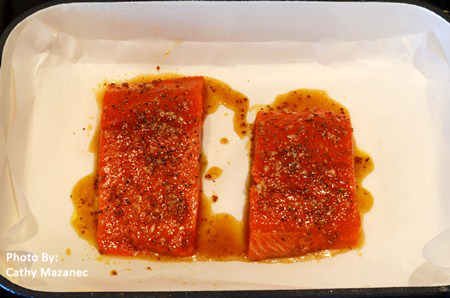
- Arrange salmon in single layer in broiling pan.
- In a bowl, mix the maple syrup and remaining ingredients; spread onto salmon.
- Broil salmon for 6 minutes or until desired doneness.
Sautéed Swiss Chard
Makes 3 Servings
(You can cook most leafy greens this way)
Ingredients
1 lb. Swiss chard
1 TBSP extra virgin olive oil
Pinch of salt
Pinch of pepper
Directions
- Wash all Swiss chard leaves and pat dry with paper towels
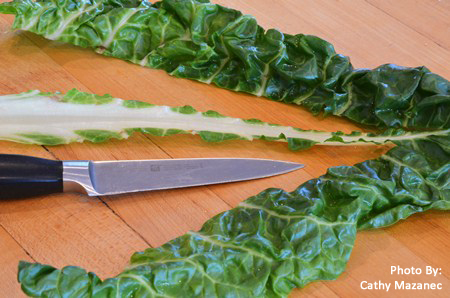
- Trim spine from each leaf (you can omit this step if you like more crunch- extra fiber!)
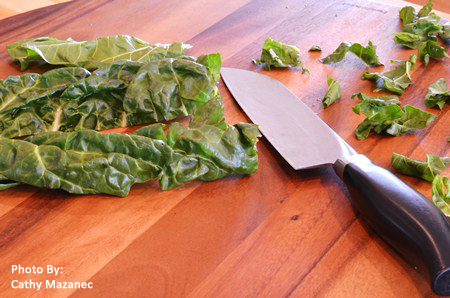
- Cut leaves into bite size pieces.
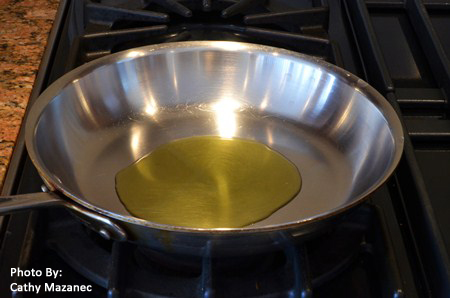
- Heat olive oil in a pan over high heat for about 30 seconds.
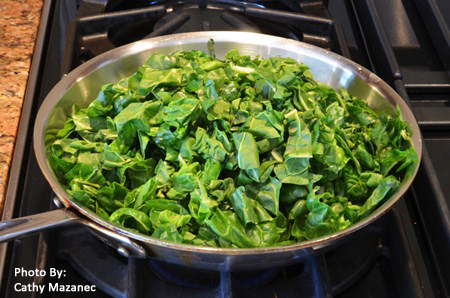
- Carefully drop chopped Swiss chard into the hot olive oil with tongs.
- Let sit for about 10 seconds then begin to slowly toss and rotate chard pieces so that they become coated with oil and slowly begin to wilt. This step takes about 1 minute.
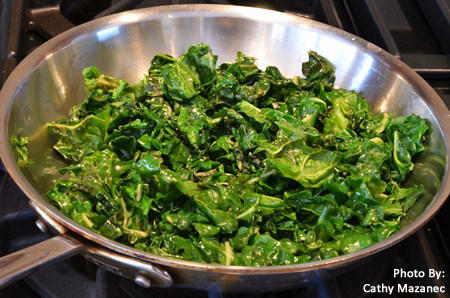
- Cook until desired tenderness.
- Add salt and pepper to taste.
Look for 3 more mood-boosting nutrients in "Nutrients to Improve Your Mood-Part 2" on Wednesday, February 26th.
Click here for a printer-friendly version of these recipes.
Click here for a printer-friendly version of this blog post.

